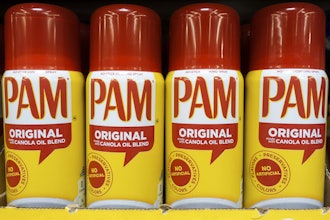If you are managing a manufacturing company, you have been steadily improving the efficiency of your operations for years. You have cut, reorganized, and streamlined over and over. You have tried to squeeze every last bit of efficiency out of your operations and supply chain. But if you are a “High Mix” manufacturer making a broad product line with hundreds or thousands of product items, you are likely still facing these challenges:
Sales
- Too many products; not sure which to grow or which to rationalize
- Not sure how much profit each product or customer really generates
- Not sure whether the sales effort is focused on most profitable customers
Marketing
- Sales and production teams not aligned on a common metric
- Hard to link productivity gains to marketing decisions
- Not sure production lines are loaded to maximize profit
Production & Finance
- Limited visibility into which products and customers drive cash, EBITDA, & ROA
- Changing prices and costs weaken control over results
- Hard to project and track returns on capital expenditures
To deliver precise answers to these questions, management teams running these High Mix, asset-intensive manufacturing companies need to go beyond traditional unit margin profit analysis to understand SKU and customer profitability on a profit per machine hour basis. Why is this important?
Unit margin only tells part of the profitability story for asset-intensive manufacturers. For industrial manufacturers where the primary investment is in production equipment, unit margin does not reflect the return on assets invested in making the product. To get an accurate picture, unit margin must be linked to how fast that margin flows through the production equipment. When armed with the metric of cash contribution per hour of machine time (aka “profit velocity”) for each customer order and product item, management teams can precisely measure the profitability of their assets and begin to fine-tune their mix of customers, products and assets to drive significant improvements in EBITDA.
Today when manufacturing management teams rely on margin per unit rankings to set priorities on customers, products, markets, pricing, new capacity investments and the like, those policies are inadvertently biased in ways that actually slow down the enterprise’s overall flow rate of profit per hour. A lower average profit per hour leads to lower profits per quarter and per year, and lower returns to investors. The table below provides an example of this bias where product B has a higher margin at $300, but in fact, product A produces more cash per hour ($1,600) and is a more profitable use of existing assets.
As illustrated below, each manufacturer with a complex product portfolio (each product type is depicted by a bubble) has at least some “low-margin, but high-profit velocity” products. Known as “hidden winners,” these products are produced fast enough to more than offset their low margins. With the metric of profit velocity, companies can identify their “hidden winners” and instead of ignoring or rejecting lower-margin (but high profit velocity) orders, management can start grabbing that business from competitors who may not understand how profitable those products really are. By preferentially loading machine capacity with these “hidden winners”—using highly targeted pricing moves and other techniques to take market share—plant utilization and profits can rise dramatically.
Efficiency vs. Effectiveness – a step up
All manufacturers work on improving their operational productivity. By pursuing lean, Six Sigma, supply chain management, and other techniques, a great deal of efficiency has been gained over the years. However, manufacturers need to consider whether there are new opportunities to boost their effectiveness. Are they making decisions that attract the most profitable mix of customer orders? By adjusting the mix of “what” they are selling and producing - not just “how” efficient they are at processing those orders, manufacturers can drive 3+% of revenues into increased EBITDA.
Using the profit per machine hour metric of Profit Velocity allows manufacturers to uncover hidden opportunities to translate strategic financial objectives into day-to-day tactical choices, which lead to substantially greater profits from existing assets.
Timothy Raven is the Managing Director of Profit Velocity Solutions, a San Francisco-based technology company that has pioneered a unique information platform for continuous profit improvement called PV AcceleratorTM. PV Accelerator provides manufactures with entirely new capabilities in the planning and control of profitability, providing unique on screen “what if” planning that instantly evaluates the profit impact of changing prices, costs, productive, volume, mix and capacity.






















